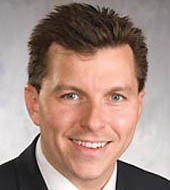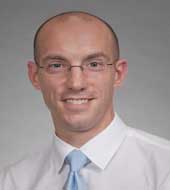Summary
Definition
History and exam
Key diagnostic factors
- ≥2-year period of seasonally related changes in mood
- fall or winter depression
- spring or summer symptom remission
- atypical depressive symptoms
- vegetative depressive symptoms
- spring or summer manic or hypomanic symptoms
- spring or summer depression
- manic/hypomanic symptoms
Other diagnostic factors
- somatic symptoms
- behavioral withdrawal
- functional impairments
- excessive alcohol use
- tachycardia
- increased systolic blood pressure
- restlessness
Risk factors
- exposure to diminished light during winter and increased light during summer
- residing at a northern latitude
- family history of seasonal affective disorder (SAD)
- female sex
- age 20 to 30 years
- psychological factors (e.g., high neuroticism)
- psychiatric comorbidity (e.g., anxiety, ADHD, premenstrual dysphoric disorders)
- alcohol use
Diagnostic investigations
1st investigations to order
- clinical exam
Investigations to consider
- blood metabolic panel
- serum thyroid-stimulating hormone
- toxicology screen (urine and blood)
Treatment algorithm
subsyndromal SAD
SAD with recurrent, unipolar depressive disorder
SAD with bipolar mood disorder
prevention of SAD with unipolar mood disorder
prevention of SAD with bipolar mood disorder
Contributors
Authors
Craig N. Sawchuk, PhD

Associate Professor
Co-Chair, Division of Integrated Behavioral Health
Department of Psychiatry and Psychology
Mayo Clinic
Rochester
MN
Disclosures
CNS declares that he has no competing interests.
Jason P. Veitengruber, MD

Assistant Professor
Department of Psychiatry and Behavioral Sciences
University of Washington School of Medicine
Seattle
WA
Disclosures
JPV declares that he has no competing interests.
William B. Leasure, MD
Clinical Instructor
Department of Psychiatry and Psychology
Mayo Clinic
Rochester
MN
Disclosures
WBL declares that he has no competing interests.
Peer reviewers
Gregory W. Dalack, MD
Professor and Chair
University of Michigan
Department of Psychiatry
Ann Arbor
MI
Disclosures
GWD declares that he has no competing interests.
Dietmar Winkler, MD
Department of Psychiatry and Psychotherapy
Medical University of Vienna
Vienna
Austria
Disclosures
DW is an author of a number of references cited in this topic. DW declares that he has no competing interests.
References
Key articles
Galima SV, Vogel SR, Kowalski AW. Seasonal affective disorder: common questions and answers. Am Fam Physician. 2020 Dec 1;102(11):668-72.Full text Abstract
American Psychiatric Association. Diagnostic and statistical manual of mental disorders, 5th ed., text revision, (DSM-5-TR). Washington, DC: American Psychiatric Publishing; 2022.
National Institute for Health and Care Excellence. Depression in adults: treatment and management. Jun 2022 [internet publication].Full text
Lam RW, Kennedy SH, Parikh SV, et al. Canadian Network for Mood and Anxiety Treatments (CANMAT) 2016 clinical guidelines for the management of adults with major depressive disorder. Can J Psychiatry. 2016 Sep;61(9):506-9. Abstract
Reference articles
A full list of sources referenced in this topic is available to users with access to all of BMJ Best Practice.
Differentials
- Major depressive disorder, single and recurrent episodes
- Bipolar I and II disorders
- Persistent depressive disorder
More DifferentialsGuidelines
- Depression in adults: treatment and management
- Clinical guidelines for the management of major depressive disorder in adults
More GuidelinesPatient information
Bipolar disorder: what is it?
Chronic fatigue syndrome (myalgic encephalomyelitis)
More Patient informationLog in or subscribe to access all of BMJ Best Practice
Use of this content is subject to our disclaimer